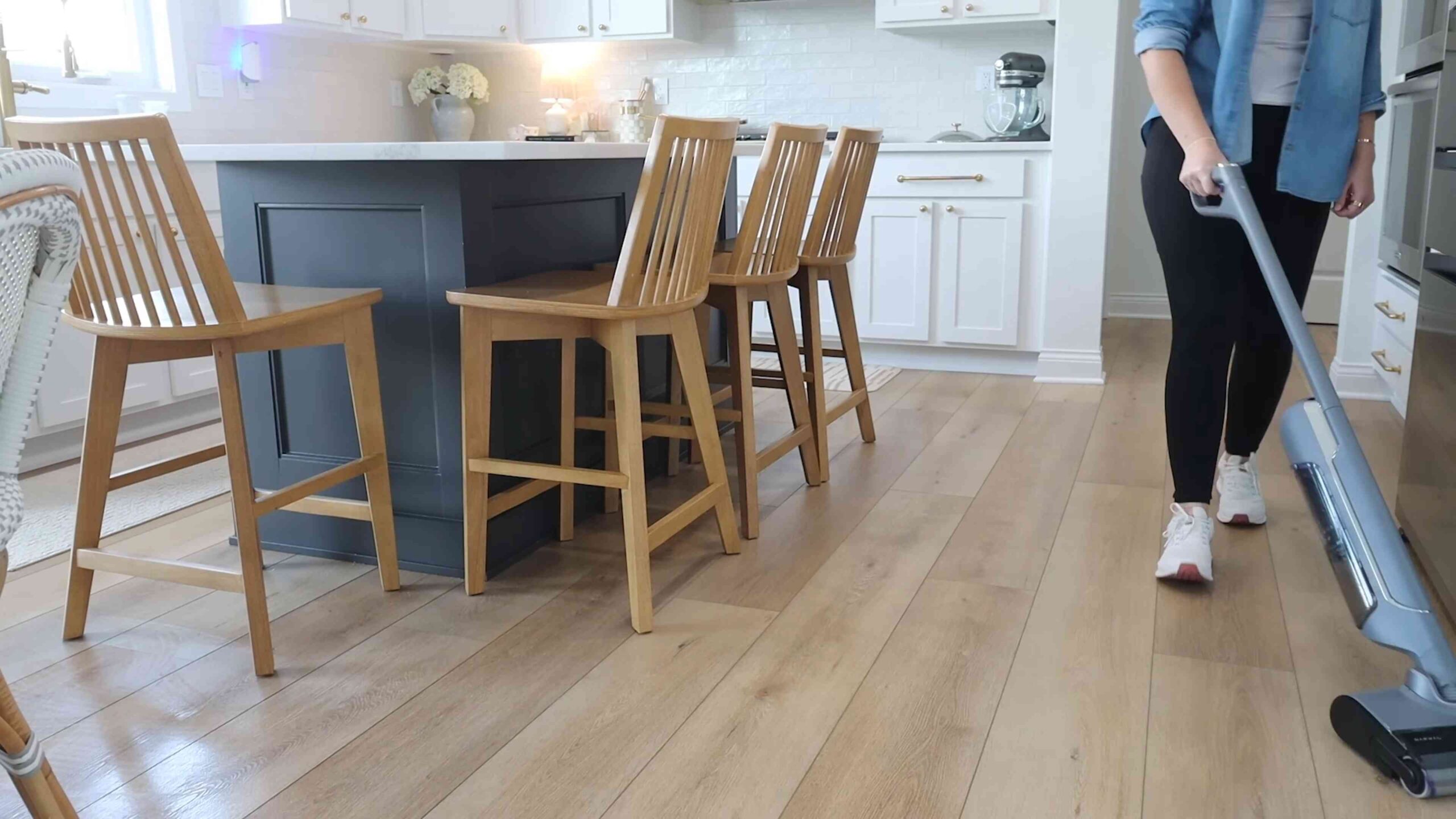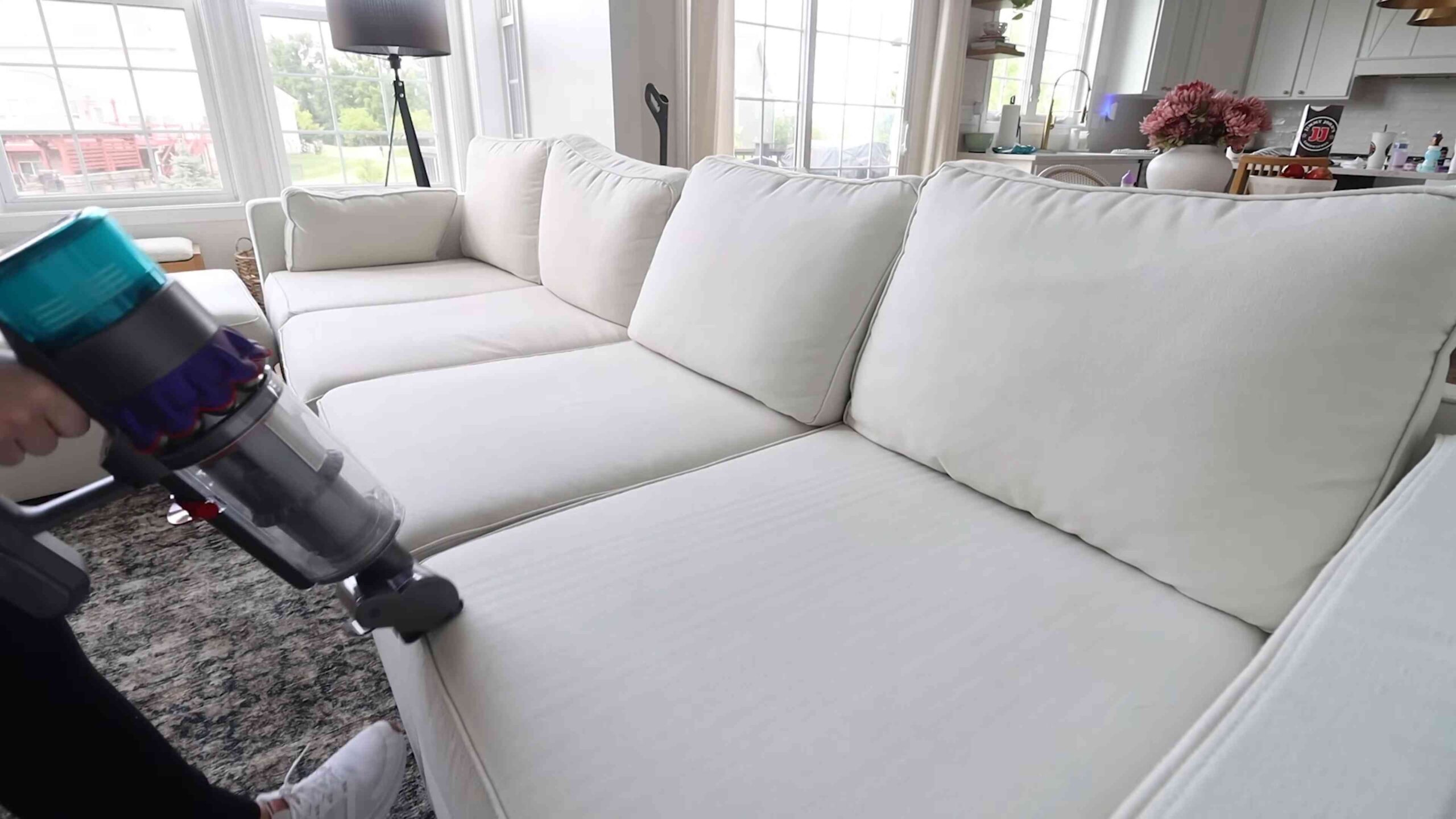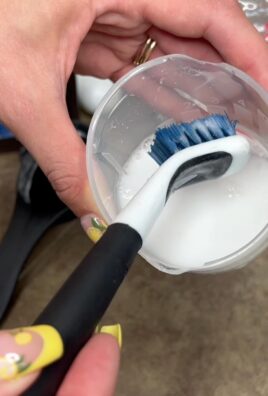Easy home cleaning tips are the secret weapon every homeowner needs in their arsenal! Let’s face it, nobody *loves* cleaning, but a sparkling home is a sanctuary. Imagine this: you walk through the door after a long day, and instead of being greeted by clutter and grime, you’re welcomed by a fresh, inviting space. Sounds dreamy, right?
For centuries, cultures around the world have developed unique cleaning rituals and remedies, often passed down through generations. From ancient Roman bathhouses to traditional Japanese cleaning practices, the pursuit of a clean and organized home has always been a fundamental aspect of human well-being. These time-tested methods often relied on natural ingredients and simple techniques, proving that you don’t need harsh chemicals or expensive gadgets to achieve a spotless abode.
That’s where these easy home cleaning tips come in. I’m going to share some of my favorite DIY tricks and hacks that will not only save you time and money but also make the whole process a little less daunting. We’ll tackle everything from stubborn stains to everyday messes, using ingredients you probably already have in your pantry. Because honestly, who has time to spend hours scrubbing? Let’s get started and transform your home into a haven of cleanliness and calm!

DIY Home Cleaning Hacks: Making Your Life Easier!
Okay, let’s be honest, cleaning isn’t exactly anyone’s favorite pastime. But a clean home is a happy home, right? So, I’m going to share some of my favorite DIY cleaning hacks that are not only super effective but also save you money and reduce the number of harsh chemicals you’re using. Get ready to transform your cleaning routine!
Cleaning the Microwave Like a Pro
Microwaves are notorious for splatters and stuck-on food. But fear not! This hack is so easy, you’ll wonder why you haven’t been doing it all along.
What you’ll need:
* 1 cup of water
* 1 tablespoon of white vinegar or lemon juice
* Microwave-safe bowl
* Clean sponge or cloth
Step-by-step instructions:
1. Mix the solution: In your microwave-safe bowl, combine the water and vinegar (or lemon juice). I personally prefer lemon juice because it leaves a fresher scent.
2. Microwave it: Place the bowl in the microwave and heat on high for 5-10 minutes. The goal is to get the solution boiling and create steam. The steam will loosen all the grime inside.
3. Let it sit: Don’t open the microwave immediately! Let the bowl sit inside for another 5 minutes. This allows the steam to really work its magic.
4. Wipe it down: Carefully remove the bowl (it will be hot!). Use your sponge or cloth to easily wipe away all the loosened food particles. You’ll be amazed at how easily everything comes off!
5. Dry it off: Finally, use a clean, dry cloth to dry the inside of the microwave. Voila! A sparkling clean microwave with minimal effort.
De-Gunking Your Showerhead
Hard water and mineral buildup can wreak havoc on your showerhead, reducing water pressure and making your showers less enjoyable. This hack will restore your showerhead to its former glory.
What you’ll need:
* White vinegar
* Plastic bag (a Ziploc bag works great)
* Rubber band or twist tie
* Old toothbrush
Step-by-step instructions:
1. Fill the bag: Pour enough white vinegar into the plastic bag to completely submerge the showerhead.
2. Secure the bag: Carefully position the bag over the showerhead, ensuring the showerhead is fully immersed in the vinegar. Use the rubber band or twist tie to secure the bag tightly around the showerhead neck.
3. Soak overnight: Let the showerhead soak in the vinegar overnight (or for at least a few hours). This allows the vinegar to dissolve the mineral deposits.
4. Remove and scrub: Remove the bag and discard the vinegar. Use the old toothbrush to scrub away any remaining mineral deposits. You might need to rinse and repeat this step a few times for stubborn buildup.
5. Rinse thoroughly: Turn on the shower and let the water run for a few minutes to flush out any remaining vinegar and debris.
6. Enjoy your revitalized shower: You should notice a significant improvement in water pressure and a cleaner showerhead!
Cleaning Your Blender Like a Pro
Blenders can be a pain to clean, especially after making smoothies or sauces. This simple hack makes cleaning a breeze.
What you’ll need:
* Warm water
* Dish soap
Step-by-step instructions:
1. Rinse immediately: After using your blender, rinse it out as soon as possible to prevent food from drying and sticking.
2. Fill with water and soap: Fill the blender jar about halfway with warm water and add a squirt of dish soap.
3. Blend it: Secure the lid and blend on high speed for about 30-60 seconds. This will loosen any remaining food particles.
4. Rinse again: Pour out the soapy water and rinse the blender jar thoroughly with clean water.
5. Air dry: Let the blender jar air dry completely before storing it.
Freshening Up Your Mattress
Mattresses can harbor dust mites, dead skin cells, and odors. This simple cleaning method will freshen up your mattress and improve your sleep.
What you’ll need:
* Baking soda
* Essential oil (optional, lavender or eucalyptus are great choices)
* Vacuum cleaner with upholstery attachment
* Sieve or shaker
Step-by-step instructions:
1. Strip the bed: Remove all bedding, including sheets, blankets, and mattress protectors.
2. Sprinkle baking soda: In a bowl, mix baking soda with a few drops of your favorite essential oil (if using). The essential oil will add a pleasant scent. Use a sieve or shaker to evenly sprinkle the baking soda mixture over the entire surface of the mattress.
3. Let it sit: Allow the baking soda to sit on the mattress for at least 30 minutes, or even better, a few hours. The baking soda will absorb odors and moisture.
4. Vacuum thoroughly: Use the upholstery attachment on your vacuum cleaner to thoroughly vacuum the entire surface of the mattress, removing all the baking soda. Make sure to get into all the crevices and seams.
5. Flip and repeat: Flip the mattress over and repeat steps 2-4 on the other side.
6. Air it out: Allow the mattress to air out for a few hours before making the bed with fresh linens.
Cleaning Grout with Baking Soda and Vinegar
Grout can get grimy and discolored over time. This natural cleaning solution will brighten your grout and make your tiles look like new.
What you’ll need:
* Baking soda
* White vinegar
* Spray bottle
* Old toothbrush or grout brush
* Water
Step-by-step instructions:
1. Prepare the paste: Make a paste of baking soda and water. The consistency should be thick enough to stick to the grout.
2. Apply the paste: Apply the baking soda paste to the grout lines.
3. Spray with vinegar: Fill a spray bottle with white vinegar and spray it onto the baking soda paste. The vinegar will react with the baking soda, creating a fizzing action that helps to loosen dirt and grime.
4. Let it fizz: Let the mixture fizz for a few minutes.
5. Scrub the grout: Use an old toothbrush or grout brush to scrub the grout lines.
6. Rinse thoroughly: Rinse the area with clean water to remove the baking soda and vinegar residue.
7. Dry it off: Use a clean cloth to dry the area.
Unclogging Drains Naturally
Chemical drain cleaners can be harsh and damaging to your pipes. This natural alternative is just as effective and much safer.
What you’ll need:
* 1/2 cup baking soda
* 1 cup white vinegar
* Boiling water
Step-by-step instructions:
1. Pour in baking soda: Pour 1/2 cup of baking soda down the drain.
2. Add vinegar: Follow with 1 cup of white vinegar.
3. Let it fizz: Let the mixture fizz for 30 minutes.
4. Flush with boiling water: Pour a pot of boiling water down the drain to flush away the clog.
5. Repeat if necessary: If the drain is still clogged, repeat the process.
Cleaning Burnt Pots and Pans
Burnt food stuck to the bottom of pots and pans can be a nightmare to clean. This simple trick will make the job much easier.
What you’ll need:
* Water
* Dish soap
* Baking soda
* Scrubbing sponge or pad
Step-by-step instructions:
1. Soak the pan: Fill the burnt pot or pan with water and add a squirt of dish soap. Bring the water to a boil on the stovetop.
2. Add baking soda: Remove the pan from the heat and add a few tablespoons of baking soda.
3. Let it sit: Let the mixture sit for at least 30 minutes, or even longer for stubborn burns.
4. Scrub away: Use a scrubbing sponge or pad to scrub away the burnt food. The baking soda and soapy water should have loosened the burnt residue, making it easier to remove.
5. Rinse and dry: Rinse the pan thoroughly with clean water and dry it with a clean cloth.
Making Your Own All-Purpose Cleaner
Why buy expensive all-purpose cleaners when you can easily make your own with just a few simple ingredients? This recipe is effective, eco-friendly, and smells great!
What you’ll need:
* Spray bottle
* 1

Conclusion
So, there you have it! Transforming your cleaning routine with these easy home cleaning tips isn’t just about saving money; it’s about reclaiming control over the ingredients you bring into your home and creating a healthier, more sustainable living space. We’ve explored simple yet effective methods that utilize everyday items, proving that a sparkling clean home doesn’t require harsh chemicals or expensive products.
The beauty of these DIY cleaning solutions lies in their adaptability. Feel free to experiment with different essential oils to customize the scents of your cleaners. Lavender, lemon, tea tree, and eucalyptus are all excellent choices, each offering unique aromatherapy benefits alongside their cleaning power. For instance, adding a few drops of tea tree oil to your all-purpose cleaner can boost its antibacterial properties, while lemon oil can enhance its degreasing capabilities.
Don’t be afraid to adjust the ratios of ingredients to suit your specific needs and preferences. If you find that your DIY glass cleaner is leaving streaks, try reducing the amount of vinegar. If your all-purpose cleaner isn’t quite cutting through grime, consider adding a bit more baking soda or washing soda. The key is to experiment and find what works best for your home and your cleaning style.
Beyond the basic recipes, consider exploring variations. Infuse your vinegar with citrus peels for a more potent and fragrant cleaner. Create a natural scouring powder by combining baking soda with a few drops of essential oil. Use old toothbrushes to scrub grout and hard-to-reach areas. The possibilities are endless!
These easy home cleaning tips are a game-changer for anyone looking to simplify their cleaning routine and embrace a more eco-friendly lifestyle. They’re cost-effective, customizable, and surprisingly effective.
We wholeheartedly encourage you to give these DIY cleaning solutions a try. Start with one or two that resonate with you and see the difference they can make. You might be surprised at how easy and rewarding it is to create your own natural cleaning products.
But the journey doesn’t end here! We’re eager to hear about your experiences. Did you try one of these recipes? Did you discover a new variation? Share your tips, tricks, and successes in the comments below. Let’s build a community of DIY cleaning enthusiasts and inspire each other to create cleaner, healthier homes. Your feedback is invaluable and will help us refine these recipes and provide even more helpful resources in the future. So, grab your ingredients, put on some music, and get ready to transform your cleaning routine with these simple, effective, and eco-friendly solutions. Happy cleaning!
FAQ
What are the benefits of using DIY home cleaning solutions?
DIY home cleaning solutions offer a multitude of benefits. Firstly, they are significantly more cost-effective than store-bought cleaners. You’re likely to have many of the necessary ingredients already in your pantry, such as vinegar, baking soda, and lemon juice. Secondly, they are much safer for your health and the environment. Commercial cleaners often contain harsh chemicals that can irritate your skin, eyes, and respiratory system, and they can also pollute waterways. DIY cleaners, on the other hand, are made with natural, biodegradable ingredients. Thirdly, you have complete control over the ingredients, allowing you to avoid allergens and sensitivities. Finally, making your own cleaners is a sustainable practice that reduces your reliance on plastic packaging and harmful chemicals.
Are DIY cleaning solutions as effective as commercial cleaners?
In many cases, yes! While some heavy-duty cleaning tasks might require specialized products, DIY solutions are surprisingly effective for everyday cleaning. Vinegar is a powerful disinfectant and degreaser, baking soda is a gentle abrasive and deodorizer, and lemon juice is a natural brightener and stain remover. The key is to use the right ingredients for the right task and to adjust the recipes to suit your specific needs. For example, a simple vinegar and water solution can effectively clean windows and mirrors, while a baking soda paste can remove stubborn stains from countertops.
What are some essential ingredients for making DIY cleaning solutions?
A few key ingredients will allow you to create a wide range of DIY cleaning solutions. These include:
* **White vinegar:** A versatile disinfectant, degreaser, and deodorizer.
* **Baking soda:** A gentle abrasive, deodorizer, and pH regulator.
* **Lemon juice:** A natural brightener, stain remover, and disinfectant.
* **Washing soda:** A stronger cleaner than baking soda, ideal for laundry and tough stains.
* **Castile soap:** A gentle, all-natural soap that can be used for a variety of cleaning tasks.
* **Essential oils:** Add fragrance and boost the cleaning power of your solutions.
* **Water:** Use distilled water for best results, especially in spray bottles.
How should I store my DIY cleaning solutions?
Store your DIY cleaning solutions in clean, airtight containers. Glass spray bottles are ideal for liquid cleaners, while airtight jars or containers are suitable for powders and pastes. Label each container clearly with the name of the cleaner and the date it was made. Store your cleaners in a cool, dark place away from direct sunlight and heat. Keep them out of reach of children and pets.
How long do DIY cleaning solutions last?
The shelf life of DIY cleaning solutions varies depending on the ingredients. Solutions containing water are more prone to bacterial growth and should be used within a few weeks. Solutions containing vinegar or alcohol have a longer shelf life, typically several months. Powders and pastes, such as baking soda paste, can last indefinitely if stored properly. It’s always best to make small batches of your cleaners and use them within a reasonable timeframe to ensure their effectiveness. If you notice any changes in color, odor, or consistency, discard the solution.
Can I use essential oils in my DIY cleaning solutions?
Absolutely! Essential oils not only add a pleasant fragrance to your cleaners but also offer additional cleaning and disinfecting properties. Some popular essential oils for cleaning include:
* **Lemon:** Degreasing and brightening.
* **Tea tree:** Antibacterial and antifungal.
* **Lavender:** Disinfectant and calming.
* **Eucalyptus:** Antiseptic and decongestant.
* **Peppermint:** Refreshing and invigorating.
When using essential oils, be sure to use pure, therapeutic-grade oils and follow recommended dilution rates. A few drops are usually sufficient for a typical cleaning solution. Always test a small area before applying the cleaner to a larger surface to ensure that the essential oil doesn’t damage the material.
Are there any surfaces I should avoid cleaning with DIY solutions?
While DIY cleaning solutions are generally safe for most surfaces, there are a few exceptions. Avoid using vinegar on natural stone surfaces like marble and granite, as it can etch and damage the stone. Also, avoid using abrasive cleaners like baking soda on delicate surfaces like polished wood or stainless steel, as they can scratch the finish. Always test a small, inconspicuous area before applying any cleaning solution to a larger surface. When in doubt, consult the manufacturer’s instructions for the specific surface you’re cleaning.
What safety precautions should I take when making and using DIY cleaning solutions?
While DIY cleaning solutions are generally safer than commercial cleaners, it’s still important to take certain safety precautions. Always wear gloves when handling cleaning solutions, especially if you have sensitive skin. Avoid mixing different cleaning solutions together, as this can create dangerous fumes. Keep your cleaning solutions out of reach of children and pets. If you accidentally ingest a cleaning solution, seek medical attention immediately. When using essential oils, be sure to follow recommended dilution rates and avoid contact with your eyes. Always work in a well-ventilated area when making and using cleaning solutions.





Leave a Comment